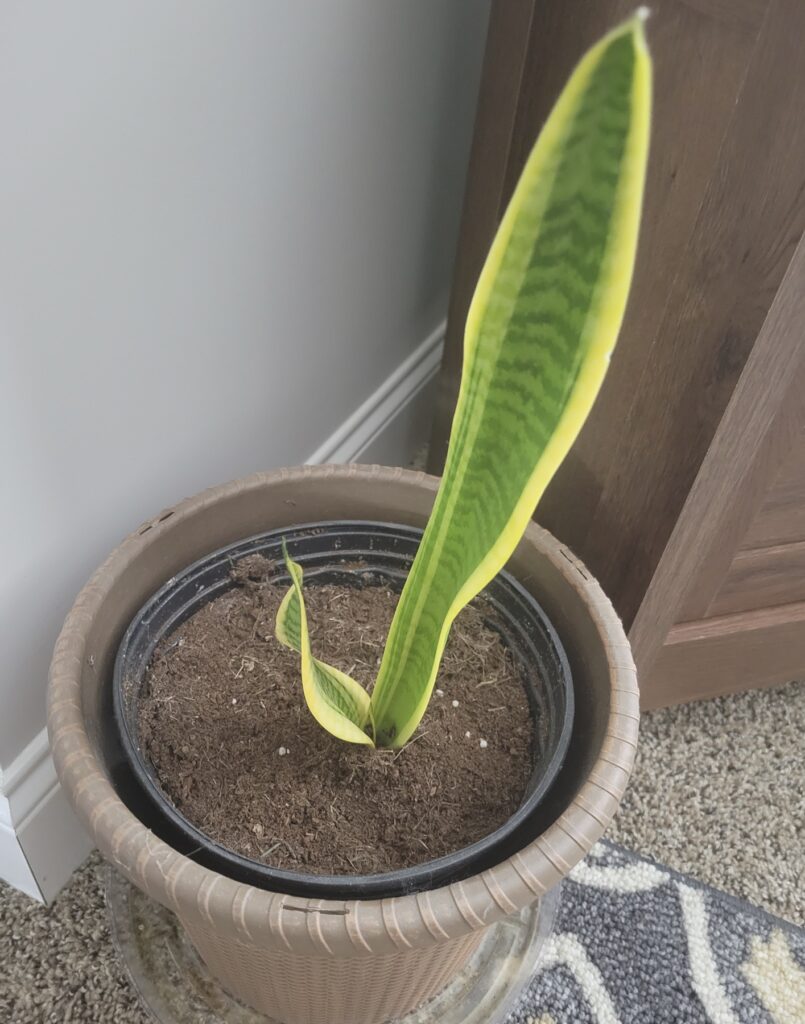The 6-Second Trick For Snake Plant Leaves Turning Yellow
Wiki Article
Getting The Snake Plant Leaves Turning Yellow To Work
Table of ContentsThe Only Guide to Snake Plant Leaves Turning YellowHow Snake Plant Leaves Turning Yellow can Save You Time, Stress, and Money.The Best Guide To Snake Plant Leaves Turning YellowThe Main Principles Of Snake Plant Leaves Turning Yellow Snake Plant Leaves Turning Yellow - An Overview
Below are seven factors your snake plant's leaves might be turning yellow and just how to repair it. Several different plant troubles can trigger yellow fallen leaves, or chlorosis. Chlorosis takes place when plants do not have the micronutrients they require to create chlorophyll, which makes vegetation environment-friendly and enables plants to convert sunlight into food.Serpent plants are drought tolerant many thanks to their succulent fallen leaves. These plants grow best in loose, well-drained soil that's allowed to dry out totally between waterings and may just need water once monthly throughout winter. Overwatering can protect against origins from soaking up moisture and nutrients that the plant needs and can even trigger origin rot.
A potbound plant can not soak up nutrients from the dirt. If your snake plant is chock-full or outgrowing its pot, this might be the cause of yellow fallen leaves.
See to it the plant has bright, indirect light and consistently cozy temperature levels, and water just once the dirt has actually fully dried out. Watch out for problems and catch them beforehand to maintain your plant looking healthy and balanced and attractive.
Some Known Details About Snake Plant Leaves Turning Yellow
If the fallen leaves on your serpent plant are getting soft, it's usually an indication of excessive water. Serpent plants shop water in their leaves and if they're overwatered, the fallen leaves can end up being soft and mushy. If you assume your serpent plant is being overwatered, allow the dirt to dry out completely before watering once more.Yes, some yellowing is regular and to be expected on older fallen leaves, especially as snake plants age. If the plant is or else healthy and the leaves are only lightly yellowed after that there is no reason for concern. However, if the fallen leaves are significantly yellowed or if there are other signs of distress after that it's ideal to do something about it.
Dead fallen leaves can give a home for pests and diseases, which can then spread out to the remainder of the plant. To get rid of a dead leaf, merely reduce it off at the base with a sharp knife or scissors. Be sure to decontaminate your reducing tool between cuts to avoid the spread of disease.
This can differ relying on the dimension of the pot, the kind of potting mix, and the temperature and moisture degrees. Generally, snake plants must be sprinkled every one to two weeks. Throughout the cold weather, you can lower watering to when a month. Snake Plant Leaves Turning Yellow. If you assume your snake plant has been overwatered, the first step is to quit watering it.
How Snake Plant Leaves Turning Yellow can Save You Time, Stress, and Money.
With a little examination, you should be able to figure out the reason and take actions to fix the trouble and have a healthy snake plant.The serpent plant is a great houseplant. The serpent plant go to the website is among those plants that are excellent for growing inside your home in a terrarium, Serpent plants can grow fairly large, yet they also tend to be rather low-maintenance. That doesn't mean you should not take note of their look. Intend your at the base because of a lack of nutrients or other issues.
When the dirt is overwatered, the plant cells take in even more water important source than they can keep. Check out below to Leaves ended up being soggy and yellow as they soak up a lot more water. Drooping serpent plant leaves are brought on by soaked-up fallen leave cells shedding their firmness. You may discover that your serpent plant will become black or brownish if the yellow spots are not remedied by dealing with overwatering.
It is, therefore, most likely that your plant will certainly spot yellow spots on its leaves if you overfeed it with plant food throughout winter. The leaves of snake plants are additionally vulnerable to yellowing when overfed, specifically if the roots are delicate. Repotting your yellowing, watering only when the soil dries, and giving optimum temperature and light conditions can save it.
Rumored Buzz on Snake Plant Leaves Turning Yellow

Your can be eliminated by removing the yellow pointers. The pruned fallen leaves should grow longer if they are watered correctly and have ideal light and temperature level problems. It is essential to keep in mind that the sharp suggestions will certainly not regrow, triggering them to stand apart from the remainder of the fallen leaves.
It won't take wish for the leaves to grow back and expand like the healthy fallen leaves around them. At the same time, you can eliminate afflicted leaves from the base of the plant. The suggests that it's obtaining as well much or inadequate light or nutrients. The crucial message is to enable the snake plant time to recoup.

The Only Guide for Snake Plant Leaves Turning Yellow
Several of the most common causes are listed here (Snake Plant Leaves Turning Yellow). Sansevierias like completely dry environments and choose little water kept at a space of one or two times weekly in summer season and regular monthly in winter season. When the water dosage obtains out of control, your Sansevieria will endure from overwatering. The most common problem released by overwatering is root rot resulting in mushy origins and stems with a foul scent.Report this wiki page